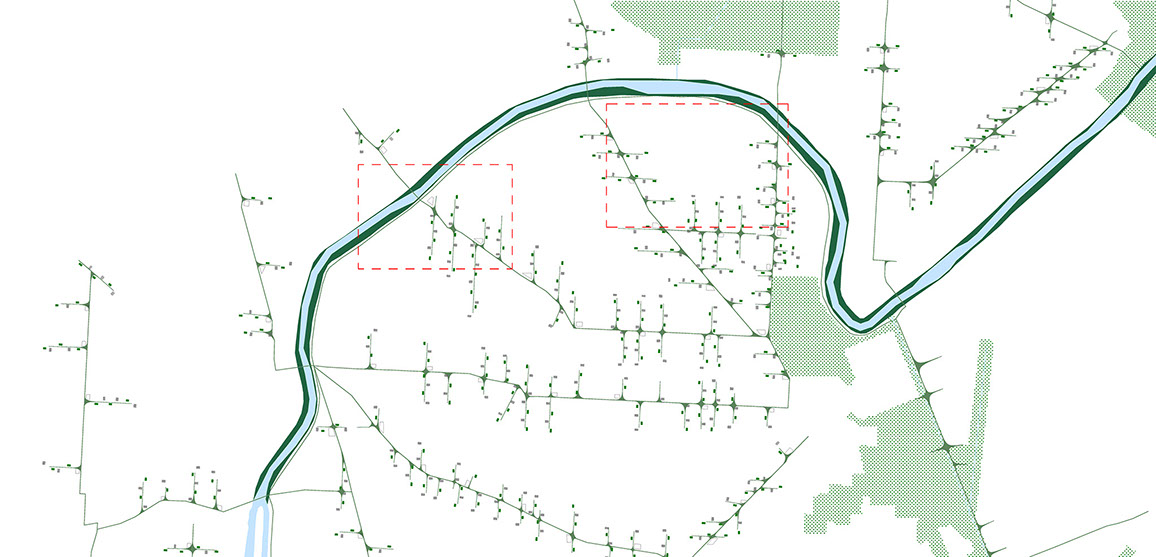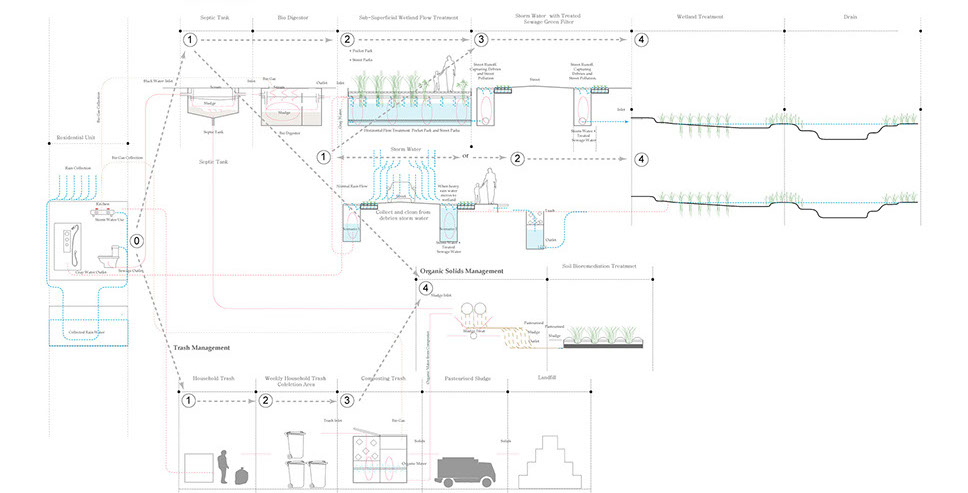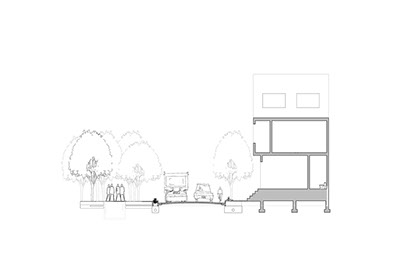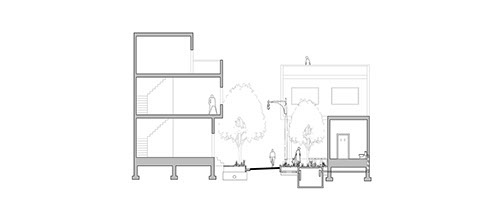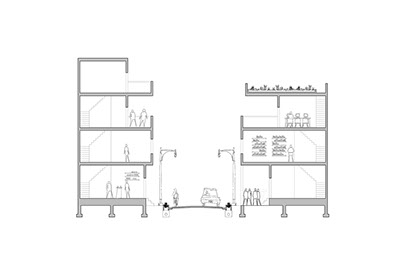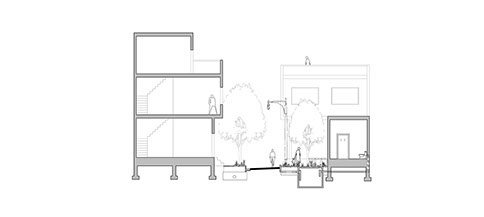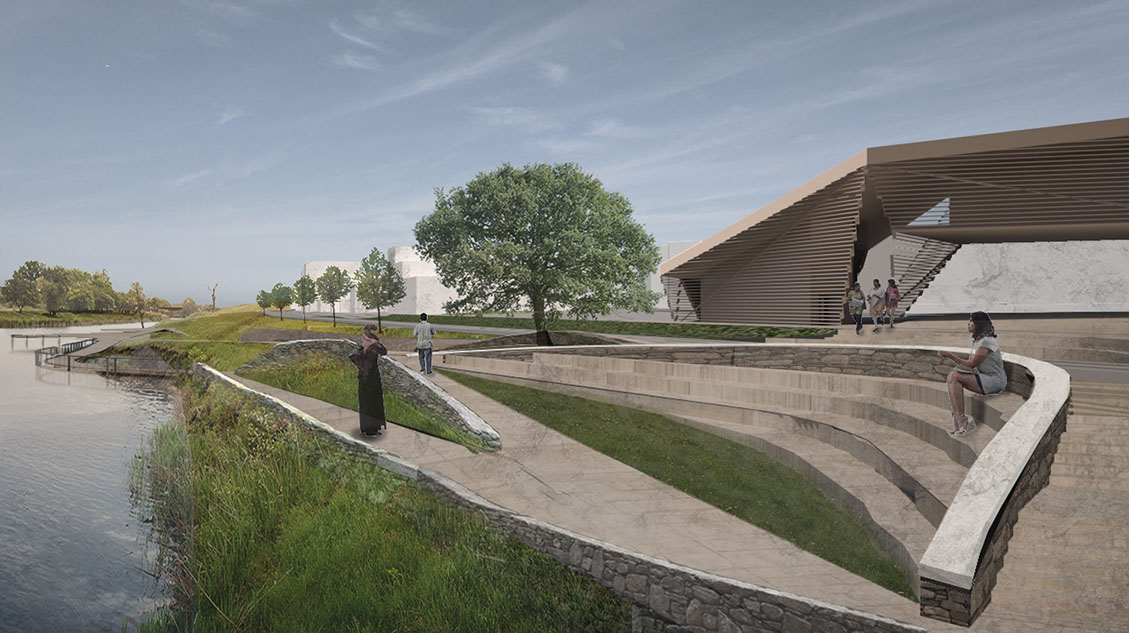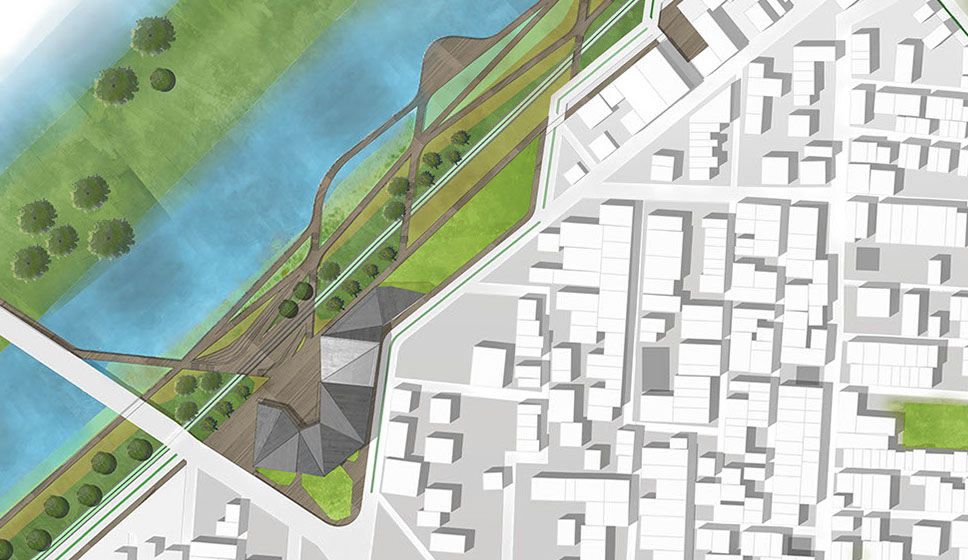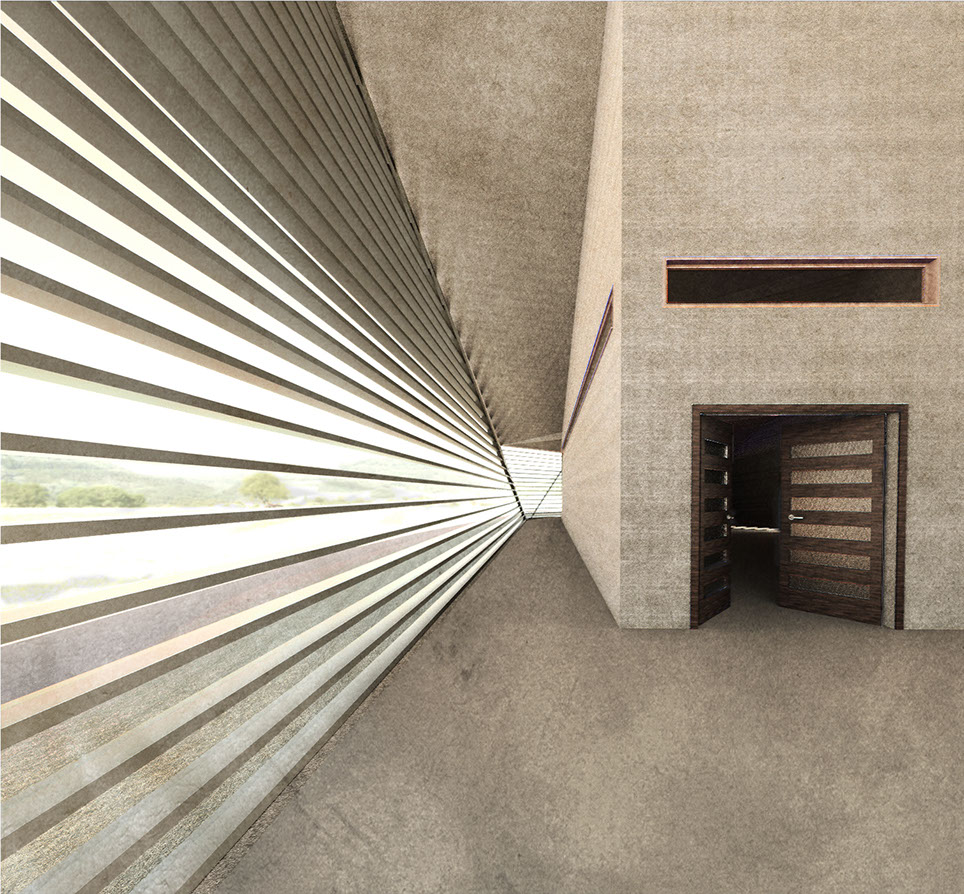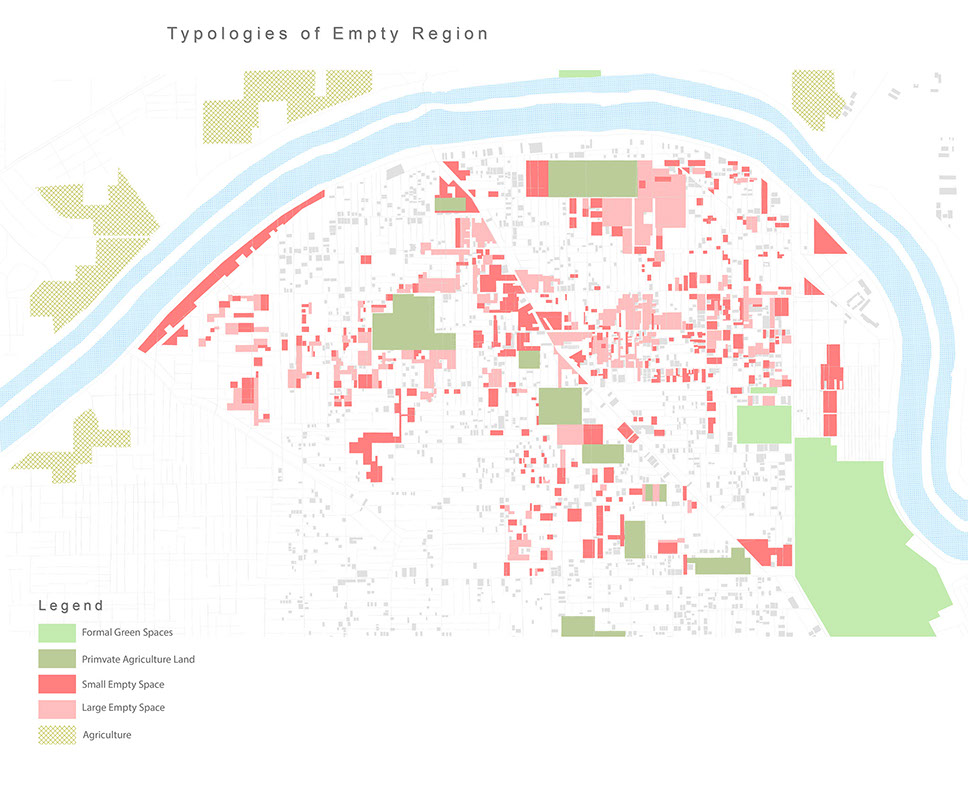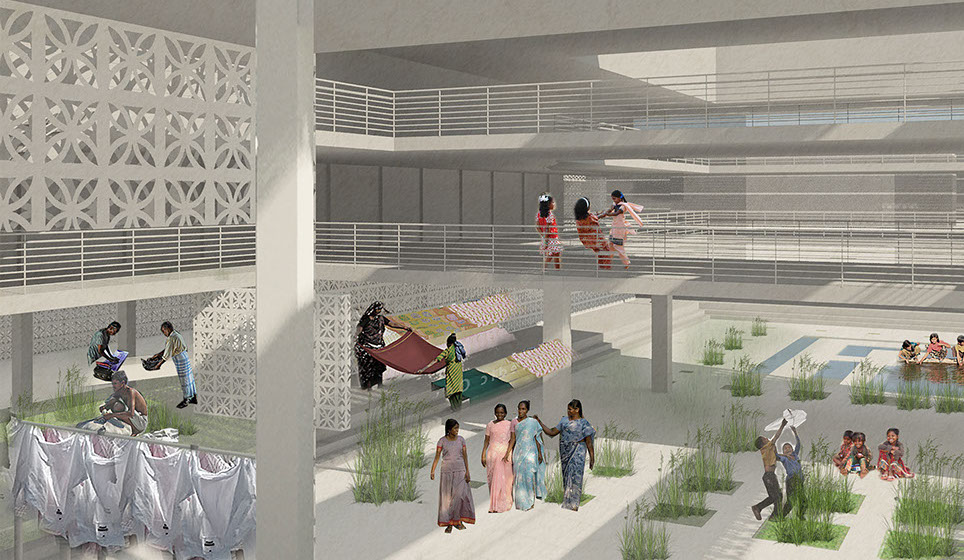The region of Hastsal is home to some of the densest JJ communities of Delhi. As a result, the area suffers many problems unique to its heavily cramped population. The area is serviced by extremely limited public programming, including schools, health clinics, police stations and green space. That which is provided is heavily walled off. As a result of the limited visual and physical accessibility, provided public space, including the Najafgarh, is often used as a dumping ground for trash and sewage. Another result of limited public space is an increase in the importance and function of the street. As a shared common space, the street is used for recreational, economical, and social functions as well as transportation. Despite the importance of the street, however, the infrastructure, specifically water infrastructure, is very poorly maintained, not able to handle the flooding, sewage or drinking needs of the people it services. The goal of this project is to rejuvenate the community’s relationship to the Najafgarh drain by redesigning the streetscape as improved public space. The new street typologies will create systems of ebb and flow, a circulation system implemented through the processes of sewage, storm water, trash, and social infrastructure.
The project starts by identifying different needs of streets based on scale and function. The smallest scaled streets will receive public restrooms and small trash collection systems. The public restrooms will be serviced by decentralized septic tanks that filter grey water through bio filtration and green space systems located along the street or in available empty lots. The trash, the majority of which is recyclable or compostable, will be separated. Compostable waste will be used to service small green spaces and community gardens that can grow crops for people or animals. As the streets scale up in size and function, the provided public infrastructure will also increase in scale and hybridity while maintaining the integrated concept of waste and green space. This proposal will provide a continuous flow of green space and water, punctured by more regularized integrals of social services. This will eventually flow to the Najafgarh, which will serve as an intermodal slow mobility spine and water filtration wetland.
